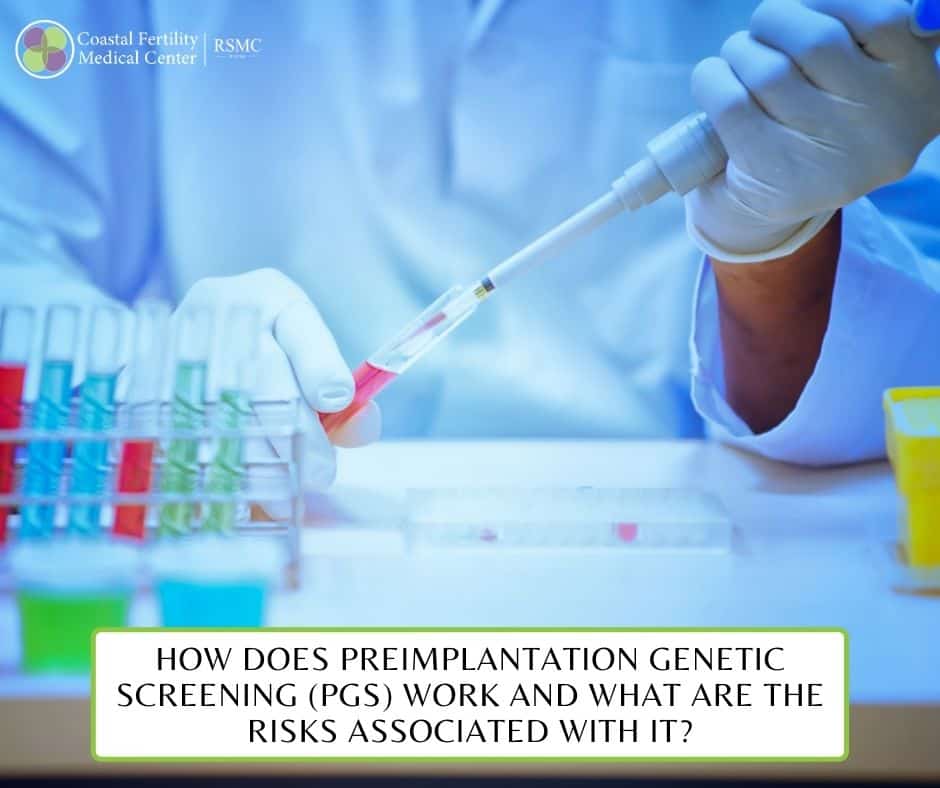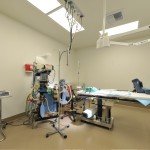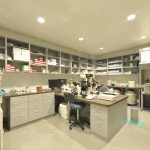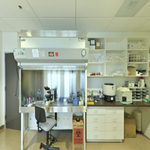About
Success
Treatment
Financial
Resources
Blog
Contact
Site Tools

- Home
- How does Preimplantation Genetic Screening (PGS) work and what are the risks associated with it?
How does Preimplantation Genetic Screening (PGS) work and what are the risks associated with it?

PGS testing also referred to as PGT-A, is a medical procedure used to select the best embryo to transfer during IVF. During PGS, a few cells are removed from the embryo, and the DNA of the sample is examined for chromosomal abnormalities to increase the success rate of IVF.
But despite the many possible benefits of this procedure, it has its own risks. In the following piece, we will look at what PGS means, how it works, and whether the test can cause harm to the embryo.
What is preimplantation genetic screening (PGS)?
Preimplantation genetic testing (or embryo biopsy) is a genetic testing technique that helps identify chromosomal or genetic abnormalities in embryos created through IVF before they are transferred. There are two tests that can be done to evaluate embryos: preimplantation genetic screening (PGS) and preimplantation genetic diagnosis (PGD).
PGS evaluates embryos for multiple genetic issues or chromosomal disorders (which affect up to 28% of embryos, depending on the woman’s age). Apart from playing a key role in various diseases, research shows that chromosomal abnormalities may also raise the odds of miscarriage and failed fertility treatments.
Genetic testing can be especially beneficial for individuals or couples who have heritable disorders, as it may help reduce the risk of transferring those diseases to their babies. It can also increase the likelihood of a healthy pregnancy by checking for possible genetic problems that can affect pregnancy and delivery.
Some facts about the risks of PGS testing
Preimplantation genetic screening is a testing procedure in which embryos created using IVF are checked for net loss or gain of genetic materials. Basically, PGS can detect chromosomal abnormalities like Down Syndrome, Turner Syndrome, etc.
- PGT helps doctors to choose the most viable, healthiest embryos for transfer.
- Embryos that have the correct number of chromosomes are referred to as euploid embryos and may be more likely to result in a pregnancy, although the evidence behind this is controversial.
- Research shows that an embryo can become damaged during PGS testing, but this remains unclear.
- It may be difficult to produce a euploid embryo during IVF: not all embryos grow to become blastocysts, and not all blastocysts will have the right number of chromosomes.
- While there is a higher chance of achieving a pregnancy with a euploid embryo, there is no guarantee that it will work.
- The results of PGS testing may be flawed, and sometimes, a seemingly abnormal embryo may not be abnormal after all.
- Aneuploidy or an incorrect number of chromosomes – aneuploidy refers to the presence of an abnormal number of chromosomes in the cell, e.g, having 45 or 47 chromosomes instead of 46.
- Edward syndrome – there is an extra copy of chromosome 18
- Down’s Syndrome – there is an extra copy of chromosome 21
- Re-arrangement or translocation of a segment of one chromosome onto another chromosome.
- Deletion or omission of one segment of a chromosome or
- Sex-chromosome abnormalities, such as deletion or duplication of X or Y. Examples of disorders associated with sex chromosomes include:
- Klinefelter Syndrome with three copies of sex chromosomes – two X and one Y.
- Turner Syndrome with a single copy of sex chromosome – one X.
Who is a good candidate for PGS?
PGS checks for abnormalities in an embryo’s chromosome, so it is more accurate at identifying embryos with correct genetic makeup than visual microscopic observation often used during IVF. Therefore, PGS enables the doctor to choose a normal embryo to be transferred into the mother’s womb, raising the odds of delivering a healthy baby.
Couples or individuals who are at great risk of having embryos with abnormal chromosomes should consider PGS. These include people with :
- Advanced reproductive age
- Recurrent pregnancy losses
- Failed IVF cycles
Other people who may consider PGS testing are individuals or couples who wish to have an elective single embryo transfer to prevent conceiving multiples in order to:
(i) increase the chances of a healthy baby through IVF or (ii) balance their family.
How preimplantation genetic screening (PGS) works
There are several methods to check all the 24 chromosomes, otherwise known as comprehensive chromosomal screening (CCS):
- Next-generation sequencing (NGS) and
- Array comparative genomic hybridization (aCGH)
These techniques are performed using a few cells from a day 5 or day 6 embryo or one or two cells biopsied from a day 3 embryo.
What are the steps involved in PGS?
A lot of steps are involved in the PGS process, with each step carried out by different experts and fertility laboratories.
- The first step is in vitro fertilization (IVF), through which embryos are formed using the traditional IVF technique or intracytoplasmic sperm injection (ICSI). Fertilized eggs (embryos) are grown in a culture medium for 3 to 5 days.
- The next step is embryo biopsy, which is typically done on day 3 or day 5 of embryo development.
- On day 3 of embryo biopsy, one or two cells are taken from the embryo for testing.
- On day 5 or 6 of embryo biopsy, around 3 to 6 cells are removed for testing.
On day five or day six of embryo development, the cells within an embryo would have separated into two types: those that will form the baby and those that will form the placenta (trophectoderm). Many cells can be extracted at this stage without affecting the embryo’s viability, which allows you to get a more accurate result.
Biopsy of a day 5 embryo
- After the cells are removed, they are placed in test tubes are transferred to an IVF for analysis.
- Usually, the cells are analyzed by an external laboratory.
- It takes more than a day for the results of the test to come out. Hence, it is essential to freeze the embryos using a fast-freezing technique called vitrification. The embryo is frozen at Coastal Fertility.
- The last step – that is, the thawing of the frozen embryo and its subsequent transfer into the uterus – is done at our fertility center.
What are the risks associated with PGS?
The risks of PGS testing are not different from those of traditional IVF.
But with PGS, it is also possible that:
- Some embryos will become damaged due to the biopsy
- No or unclear result because of a technical issue
- Incorrect result due to chromosomal mosaicism in the embryo (Mosaicism is when a person has two or more cells with different chromosomal composition in their body).
To conduct PGS testing on a cleavage-stage embryo, one or two cells are removed and sent to the lab for testing. But with only a few cells, to begin with, this may cause severe damage to the embryo.
It’s obvious how this could damage the embryo – what if the cell or cells biopsied are necessary for the development of the embryo? Considering that there are a handful of cells at this stage, PGS testing may pose serious harm to the embryo. But with blastocysts, there are a lot of cells.
Does biopsying a blastocyst-stage embryo cause any harm to the embryo?
Blastocyst culture has become more common nowadays, and biopsy performed on a blastocyst-stage embryo is believed to be superior to cleavage-stage biopsy.
As you can see above, a biopsy of a cleavage stage embryo can damage the embryo. The reason is that there are only a few cells, to begin with. But with blastocyst stage embryos, there are several cells in the trophectoderm (that form the placenta), so removing a small piece should not cause much damage, right? Well, it is not clear.
A 2013 research showed that embryo biopsy did not cause any damage and that biopsied embryos had the same chances of success as non-biopsied embryos. However, there are also studies that suggested the opposite.
5 to 6 cells are removed during an embryo biopsy, but what if it is the larger piece that was biopsied?
In a 2014 study, researchers found that ongoing pregnancy rates decreased when a large piece was removed from an embryo, perhaps because the embryo could not recover.
The development phase of the embryo during PGS
Another thing that can also have a huge impact is the development stage of the embryo at the time of biopsy.
According to a 2019 study, embryos had better implantation chances if their cells are removed when they expanded and were hatching out of the zona pellucida. On the contrary, embryos biopsied very early had significantly lower success chances, and the researchers suggest that this may be due to damage resulting from the biopsy itself.
A 2020 paper also precluded that about 17 to 39% of embryos may be lost during the embryo biopsy process. The authors arrived at this figure by checking the data of a large study where preimplantation genetic testing failed to perform as expected.
Therefore, PGS testing may pose harm to a blastocyst-stage embryo, affecting its success chances. Although removing the right-sized piece at the right development stage can help lower the potential damage, it is possible that there are other factors involved we don’t know about.
Does PGS testing improve success rates?
The chances of having a positive outcome with PGS testing and IVF depend on the number of the produced embryos that have a positive result in the test. Existing data show that the live birth rate is between 60-80% when a single frozen embryo is transferred in a second cycle.
These data are promising since most of the women who undergo PGS in conjunction with IVF treatment are more likely to produce chromosomally abnormal embryos. This may be due to advanced reproductive age, unsuccessful IVF attempts, or repeated pregnancy losses.
A 2015 review of studies comparing PGS testing with no testing found that it is indeed beneficial, but these studies involved only a few participants and used good prognosis women ( below 35 years) who may have had a better chance even without the test.
Plus, a 2019 research found that there’s no difference when PGS testing is used for women aged between 25 and 40. But further analysis indicated that the ongoing pregnancy rates improved in women aged 35 to 40.
At times, none of the embryos will be suitable for transfer because:
- Only a few eggs are collected or fertilized
- The cells got damaged during the biopsy
- All the embryos have an incorrect number of chromosome
Does PGS testing lower the chances of miscarriage?
A 2018 report contains data suggesting that PGS testing lowers the rates of miscarriage.
Bottom line
Overall, PGS testing may be a good option for women above 35. The reason is that egg quality decreases with age, and there is an increased chance of producing chromosomally abnormal embryos when you are old. However, you need euploid embryos to achieve success with PGS testing.
Coastal Fertility Medical Center offers complete PGS and PGD testing along with specialized IVF procedures to increase your chances of success. Schedule a consultation to learn how we can realize your dream of parenthood.
Schedule a Consultation
Related Post
-
What is Azoospermia – Types, Causes, Symptoms, and Treatments
-
15 Things Doctors Want Women in Their 30s to Know About Their Fertility
-
Ovarian Hyperstimulation Syndrome (OHSS) – Causes, Risks, and Treatments
-
This IVF Pregnancy Success Video Is Going Viral On TikTok, And It’s The Most Adorable Announcement
-
End your week with these happy and heartwarming stories and videos
-
Fertility clinic shares IVF pregnancy success with parents-to-be in adorable video
Halloween 2019
Each year, Coastal Fertility Medical Center’s staff hosts a fun get together for our former patients and their families. View more photos from our 28th annual Miracle Babies Halloween event!Popular Searches
- Orange County Fertility Clinic
- Irvine, California Fertility Center
- Coastal Fertility Medical Center
- Free Fertility Seminar, Irvine CA
- In Vitro Fertilization and ICSI
- Best Orange County Infertility Doctor
- Southern California Fertility Specialist
- PGD, PGS Orange County
- Egg Donation and Surrogacy
Address
Coastal Fertility Medical Center15500 Sand Canyon Avenue
Suite 100
Irvine, CA 92618
©2024 | Sitemap | HIPAA/Privacy | Disclaimer and Privacy Policy
News from our Top Doctors

Our fertility clinic focuses on helping you build your family regardless of your sexual orientation or the gender you choose to identify with. We are even taking further steps to make LGTB people feel more welcome at our fertility clinic. Each of our patient-facing staff goes through LGTB training to let family-building clinicians provide necessary support and make you feel highly welcome.

Coastal Fertility Medical Center offers one of the most advanced fertility treatments and is completely transparent regarding the costs of procedures and any other expenses that you may have to pay before commencing your treatment. This differentiates us from some fertility clinics that reduce prices before the signing of the contract but charge you extra later on. We make sure our patients are well aware of any possible extra pricing that may occur over the course of their treatment.

The infertility industry is currently segmented, with each service or treatment being handled by a different provider. Our all-inclusive model simplifies an otherwise complex and difficult process. We are here to revolutionize the infertility industry by offering a one-stop-service model to assist our patients through infertility challenges while reducing physical, emotional, and financial risks.

Our globally respected team of specialists are helping improve IVF technologies to enter into a generation of better outcomes for infertility. Although you’ll have a doctor guiding you, you are also going to benefit from the experience and insights of other doctors during case review collaboration meetings, which take place every week. So, you won’t just rely on the expertise of a specialist but benefit from the knowledge of many reputed fertility experts.

Our team specializes in difficult cases and help patients who may have been considered “hopeless” at other fertility clinics. Thanks to our personalized solutions, expertise, and internal collaboration, weare able to maximize pregnancy success rates that are well above the industry average, even in difficult infertility cases.

We know that every situation is different and that everyone requires different treatments. Unlike facilities that take “a one-size-fits-all” approach for all cases, our fertility specialists use more than 40 customized protocols to raise the chances of success. The customized approach even extends to our fertility laboratory. Our on-site lab director and his highly-experienced team nurture every embryo and egg to increase the odds of success of each cycle.

Coastal Fertility Medical Center offers one of the most advanced fertility treatments and is completely transparent regarding the costs of procedures and any other expenses that you may have to pay before commencing your treatment. This differentiates us from some fertility clinics that reduce prices before the signing of the contract but charge you extra later on. We make sure our patients are well aware of any possible extra pricing that may occur over the course of their treatment.
Thanks for Joining!
We will be sending new updates soon.
You’re all set!
Your new patient forms have been submitted and received. We look forward to seeing you at your appointment.
Send us a message, we’ll be happy to answer any questions!
Please complete the form so we can best serve and help you with your journey towards parenthood.
On Demand Seminar Registration
Following the Preimplantation Genetic Screening process, which helps ensure there are normal chromosome numbers and detects possible genetic disorders, the most healthy embryo(s) are selected to be implanted into your or your chosen surrogate’s womb. 2 weeks after the transfer of the embryo, your physician will conduct a final blood test to determine the level of hCG (human chorionic gonadotropin) in your body. Increased hCG levels usually indicate a positive pregnancy test.

For fertilization to take place, the collected egg and sperm are combined in a petri dish and cultured in an embryo incubator. This dish is closely watched to check whether any of the eggs have been fertilized. Once the egg is fertilized, it is referred to as an embryo or a blastocyst on the 5th day of development. Our in-house embryologist carefully nurtures every embryo to the right time, even if it means working outside the standard business operating hours. For instance: If an oocyte is not mature, our laboratory will wait for it to mature and then ICSI it at the right time.

The egg retrieval is a slightly invasive medical procedure that takes about 20 to 30 minutes. You will be given an anesthetic to make you sleep for the duration of the procedure. Using ultrasound technology, your doctor will harvest your eggs transvaginally with a small, hollow needle connected to an ultrasound probe. Once your eggs are collected, your partner’s semen or donor sperm you have pre-selected is used for fertilization. The sperm are washed and prepared, and the top-quality sperm extracted is used to fertilize the eggs.

Your doctor will create a customized medication schedule that contains information about the fertility medications and hormone injections you have to take. Medication and injections are taken to encourage your ovaries to mature a large number of eggs for fertilization. Since women don’t respond to fertility drugs and hormones the same way, personalized protocols are crucial to the IVF cycle success. At Coastal Fertility, we will monitor you closely, letting you understand the changes occurring in your body and keeping track of how your egg follicles are growing.

On-site consultations typicallyinclude a standard fertility evaluation, consisting of a physical examination, complementary follicular ultrasound, and testing to enable your doctor to know your present fertility status and draw up a treatment plan.

This consultation includes a detailed medical evaluation with a doctor. You and your physician will review your health records and have enough time to talk about your goals and get answers to your questions. We recommend that you jot down all your questions before the visit to allow you to make the best use of the time spent with your doctor.

Your Reproductive Endocrinologist will take all factors into consideration and create a comprehensive plan of care, otherwise known as the treatment plan. This plan will include treatment recommendations from the physician and enable your financial coordinator to make a precise quotation once you meet.

Our globally respected team of specialists are helping improve IVF technologies to enter into a generation of better outcomes for infertility. Although you’ll have a doctor guiding you, you are also going to benefit from the experience and insights of other doctors during case review collaboration meetings, which take place every week. So, you won’t just rely on the expertise of a specialist but benefit from the knowledge of many reputed fertility experts.

The infertility industry is currently segmented, with each service or treatment being handled by a different provider. Our all-inclusive model simplifies an otherwise complex and difficult process. We are here to revolutionize the infertility industry by offering a one-stop-service model to assist our patients through infertility challenges while reducing physical, emotional, and financial risks.

Our fertility clinic focuses on helping you build your family regardless of your sexual orientation or the gender you choose to identify with. We are even taking further steps to make LGTB people feel more welcome at our fertility clinic. Each of our patient-facing staff goes through LGTB training to let family-building clinicians provide necessary support and make you feel highly welcome.

We know that every situation is different and that everyone requires different treatments. Unlike facilities that take “a one-size-fits-all” approach for all cases, our fertility specialists use more than 40 customized protocols to raise the chances of success. The customized approach even extends to our fertility laboratory. Our on-site lab director and his highly-experienced team nurture every embryo and egg to increase the odds of success of each cycle.

Our team specializes in difficult cases and help patients who may have been considered “hopeless” at other fertility clinics. Thanks to our personalized solutions, expertise, and internal collaboration, weare able to maximize pregnancy success rates that are well above the industry average, even in difficult infertility cases.

Upon your arrival, you will check in with a Patient Care Coordinator. We will obtain your insurance information for benefits verification, a copy of your identification and take a picture for your electronic medical chart
Welcome to Coastal Fertility Family
Coastal Fertility is the leading provider of fertility solutions located in Orange County. Join us to get free updates on fertility news, treatments, infertility solutions and more.
Welcome to Coastal Fertility Family
Coastal Fertility is the leading provider of fertility solutions located in Orange County. Join us to get free updates on fertility news, treatments, infertility solutions and more.





































